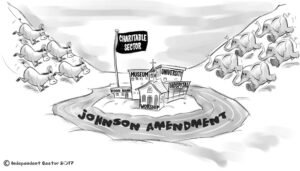Seven Priests Face Discipline Over Church Sex Abuse Scandal

Seven priests face discipline over church sex abuse scandal
Introduction to the Scandal
The recent church sex abuse scandal involving seven priests has sent shockwaves through the community and reignited conversations surrounding accountability within religious institutions. This crisis began to unfold when multiple allegations surfaced, detailing inappropriate conduct and the exploitation of vulnerable individuals by clerics who were trusted to provide spiritual guidance and support. The gravity of these accusations has sparked public outrage and a renewed commitment to transparency in the church.
Key events leading up to the current situation include a series of investigations initiated by both church authorities and law enforcement, driven by courageous individuals who came forward to report their experiences. These allegations span several years, revealing a disturbing pattern of behavior that not only harmed victims but also contributed to a culture of silence and protectionism within church hierarchies. The failure to adequately address prior accusations has raised significant concerns regarding the integrity of church leadership and its responsivity to claims of abuse.
As the investigations progress, it becomes imperative to understand how these developments impact not only the accused but also the broader community of worshippers and church followers. The implications are profound, affecting both the faith and trust that parishioners have in church institutions. The revelations about these priests’ actions challenge the core values and teachings of the church, calling into question its moral authority. As the scandal continues to unfold, it serves as a stark reminder of the critical need for cultural change within religious organizations to ensure accountability and protection for all individuals, especially the most vulnerable.
Details of the Allegations
The allegations against the seven priests have emerged from a series of disturbing personal testimonies and formal complaints brought forward by victims and their families. The nature of the allegations spans various forms of sexual abuse, including inappropriate touching, exploitation of minors, and more severe instances of assault. These accusations have been reported primarily by individuals who were vulnerable at the time, often revealing a pattern of manipulation and betrayal of trust within the church community.
These incidents reportedly occurred over a considerable timeframe, stretching back several decades, with some allegations dating to the late 1970s. This prolonged period raises significant concerns regarding the systemic nature of the abuse and the potential for other unreported cases. Many victims have described their experiences in harrowing detail, providing a glimpse into the emotional and psychological impact these acts had on their lives. Some accounts indicate that the abuse occurred during church functions or while the priests were entrusted with the spiritual care of young parishioners.
The disclosure of these allegations has been facilitated through a mix of grassroots advocacy and investigative journalism, highlighting a collective demand for accountability. Victims have bravely stepped forward, often motivated by the need for justice and the desire to protect future generations from similar experiences. Their testimonies have not only added credibility to the claims but have also prompted a larger conversation surrounding the church’s role in addressing such matters, including the potential complicity of church authorities in maintaining silence around these issues.
In light of these allegations, the church is facing immense pressure to take proactive measures to ensure the safety of its congregants and to foster a culture of transparency and accountability. As the situation develops, more information is likely to surface, shedding further light on the troubling history of abuse within the church’s hierarchy.
Church’s Response
The recent allegations of sexual abuse involving seven priests have prompted an official response from church authorities. Recognizing the gravity of the situation, the church has made several public statements aimed at addressing the concerns raised by the community and victims. In these statements, church leaders underscored their commitment to transparency and accountability. They expressed deep sorrow for the pain inflicted on victims and emphasized their dedication to supporting those who have come forward with their accounts of abuse.
In light of these allegations, the church initiated internal investigations to thoroughly examine the claims against the priests involved. These investigations are being conducted by independent review boards comprising external experts. The church has assured the faithful that these boards will operate independently, aiming to establish the truth and determine appropriate disciplinary measures based on the findings. This proactive approach seeks to rebuild trust within the community and reaffirm the church’s commitment to protecting its members.
Furthermore, the church outlined a comprehensive plan to address the broader issues of abuse within its ranks. This includes the implementation of enhanced training programs aimed at educating clergy and lay leaders about ethical conduct and safeguarding vulnerable populations. Additionally, measures are being established to ensure that any future allegations are dealt with expediently and effectively. Through these initiatives, the church aims to foster a culture of vigilance and accountability, minimizing the risk of future occurrences of abuse.
Overall, the church’s response reflects a dual approach—acknowledging past failures while actively working to establish better practices going forward. By taking both immediate and long-term actions, church authorities hope to navigate through this difficult period while restoring faith in the institution.
The Role of Church Governance
The governance structure of the church plays a critical role in addressing allegations of misconduct, particularly in cases involving sexual abuse. Central to this framework are policies and protocols designed to facilitate reporting and addressing grievances. Unfortunately, despite these guidelines, challenges remain in effectively implementing them, often allowing issues to persist unaddressed.
Church governance typically includes a hierarchy of leaders, committees, and designated officers responsible for upholding moral and ethical standards. Policies for reporting misconduct, including sexual abuse, are intended to provide a clear pathway for victims to come forward without fear of retribution. These protocols commonly emphasize confidentiality, support for complainants, and the assurance of thorough investigations. However, the effectiveness of these measures can be significantly impeded by various factors including organizational culture and hierarchical resistance.
The challenge of enforcing policies arises when church leaders are implicated in allegations. Loyalty to leadership figures can lead to an environment where victims feel pressured to remain silent, thereby preventing the proper functioning of established protocols. Additionally, the spiritual abuse of power can complicate the reporting process, as victims may fear the consequences of divulging their experiences to authorities within the church. The governance structures need to promote transparency and accountability, yet often they cluster around protective mechanisms that shield those in powerful positions.
As a result, the interplay between church governance and the handling of sexual abuse allegations is complex. Reforming these structures requires a commitment not only to effective implementation of policies but also to fostering a culture that promotes healing and accountability. Ultimately, achieving this will be essential in ensuring that similar scandals do not undermine the faith of the congregation and the integrity of the institution.
Community Impact and Reactions
The revelations surrounding the church sex abuse scandal have undeniably triggered a profound impact on the church community and the wider society. Disappointment and anger have been rampant among parishioners, whose faith in their religious leaders has been shaken. Many community members have expressed feelings of betrayal, as those they once held in high regard are now implicated in such serious allegations. The once unyielding trust that defined their spiritual guidance is now overshadowed by doubt and insecurity, leading many to question their continued participation in church activities.
Community leaders have also voiced their concerns regarding the cascading effects of this scandal. They recognize that the faith of congregants has been deeply undermined, and many are calling for transparency and accountability in how the church addresses these issues. Urging a focus on healing, several leaders have advocated for support systems to help victims and their families, emphasizing the need for a collective response that prioritizes survivor welfare over the institution’s reputation. As these discussions unfold, local advocacy groups are stepping up to provide necessary resources, aiming to support both victims and those grappling with the emotional fallout of the scandal.
This incident is not solely confined to the walls of the church; its implications extend to the broader religious landscape. The scandal has ignited renewed conversations regarding the need for comprehensive reform within religious institutions. Many are advocating for stricter policies regarding the prevention of abuse and the protection of vulnerable individuals, while others are demanding a re-evaluation of power dynamics within church hierarchies. As communities process their grief and anger, it is crucial for religious organizations to address these concerns thoughtfully and proactively. The reactions to the scandal highlight an urgent need for change and a reassessment of trust between spiritual leaders and their congregations.
Legal Ramifications
The recent allegations against seven priests involved in a significant church sex abuse scandal raise numerous legal concerns that necessitate thorough examination. Central to this situation are the potential criminal charges that could be filed against the accused individuals. These charges may include various offenses such as sexual assault, exploitation, and other relevant criminal acts. Prosecutors possess the authority to initiate criminal proceedings if sufficient evidence is gathered to support the allegations. In cases like this, the criminal justice system plays a crucial role in determining accountability and justice for the victims.
In addition to potential criminal charges, civil lawsuits also constitute a pivotal aspect of the legal landscape surrounding the scandal. Victims of sexual abuse often resort to civil court to seek compensation for the trauma and suffering they have endured. Such lawsuits may hold not only the accused priests accountable but also the institutions that employed them, under the principle of vicarious liability. Previous cases involving church sex abuse have demonstrated that victims can achieve substantial settlements or verdicts, resulting in financial reparations for their pain and suffering. These civil suits not only serve as a means for victims to reclaim a sense of justice but also to encourage institutional accountability.
It is essential to consider the legal rights of the victims during this tumultuous time. Victims are entitled to seek legal counsel, pursue protective measures, and engage with advocacy organizations that specialize in supporting survivors of abuse. Furthermore, previous legal precedents in similar cases, such as the extensive litigation against various religious institutions, provide a framework for understanding how courts have approached these sensitive matters. Such precedents highlight the necessary balance between protecting victims’ rights and ensuring a fair legal process for the accused. Ultimately, navigating the legal ramifications of this scandal will require careful consideration of both criminal and civil dimensions as they unfold.
Historical Context of Abuse in the Church
The issue of sexual abuse within religious institutions, particularly in the Christian church, is not a recent phenomenon. Instances of misconduct have been documented for centuries, often buried beneath a veneer of confidentiality and protectionism. Historically, churches operated as trusted moral authorities, often deflecting accusations of abuse to maintain their reputations. This culture of silence frequently left victims without recourse, thereby perpetuating a cycle of abuse that has gone unchecked for generations.
Notably, the Catholic Church has faced numerous scandals since the latter half of the 20th century. Revelations in the 1980s and 1990s regarding priests abusing minors garnered extensive media attention, exposing a systemic issue within the church hierarchy. Church officials often prioritized the institution’s image over justice, leading to a failure to report incidents to law enforcement and enabling offending priests to remain in ministry. Many dioceses attempted to handle such matters internally, transferring accused clergy to different parishes instead of suspending them or taking appropriate legal action.
As the public became more aware of these abuses, the relationship between the church and its congregants began to fracture. Survivors and advocacy groups pressured the church for accountability, culminating in various lawsuits and settlement agreements. The changing societal views on sexual misconduct and the importance of protecting victims have prompted many denominations and ecclesiastical bodies to re-evaluate their policies and responses to allegations. In recent years, many religious organizations have taken steps to implement accountability measures designed to shield both minor members and vulnerable adults from potential abuse.
This historical context highlights the enduring nature of these allegations and the struggle faced by survivors seeking justice and acknowledgment from an institution that long prioritized its own stability over the safety of its members. Understanding this context provides essential insight into the ongoing challenges and complexities surrounding sexual abuse in the church today.
Path to Reform
The recent church sex abuse scandal has reignited calls for reform within religious institutions across the globe. In the wake of the allegations against seven priests, there is an urgent need for transparent accountability measures that not only address past abuses but also protect future victims. Various initiatives have emerged that seek to fundamentally change how such cases are handled and to restore the faith of congregation members.
One significant area of reform involves the establishment of independent review boards. These boards, composed of laypeople and experts in abuse prevention, can oversee the investigation of allegations against clerics. Such independent bodies are crucial for ensuring impartiality and fostering trust in the process of addressing complaints. Their role would extend beyond investigations to provide ongoing oversight of church practices related to abuse prevention.
Moreover, many advocates emphasize the importance of mandatory training for church leaders and staff. This training would focus on recognizing the signs of abuse, understanding the dynamics of power, and establishing protocols for reporting incidents. By equipping church personnel with the necessary tools and knowledge, institutions can create safer environments that prioritize the welfare of vulnerable populations.
Furthermore, restorative justice programs are being discussed as a way to genuinely address the harm caused by abuse. These programs focus on the healing of victims, offering them opportunities for dialogue, acknowledgment, and compensation. The integration of such programs demonstrates a commitment to not only holding offenders accountable but also recognizing the pain endured by victims, which is essential for rebuilding trust in the church.
Experts argue that these reforms should be guided by best practices from secular organizations that have effectively addressed similar issues. Listening to the perspectives of abuse survivors and their advocates is paramount, ensuring that reforms are survivor-centered. The church must embrace these recommendations to move toward a future characterized by justice, healing, and renewed faith.
Conclusion and Future Implications
The recent decision to discipline seven priests in connection with the ongoing sex abuse scandal has illuminated both the gravity of the situation and the church’s struggle to confront these difficult issues. This moment marks a critical juncture for the church as it grapples with the consequences of past actions and seeks to restore trust among its congregants. Despite long-standing traditions and protection of clergy, the need for accountability is becoming increasingly paramount in light of the serious allegations that have emerged.
This scandal serves as a reminder of the vital importance of safeguarding the rights of victims and addressing their concerns with sincerity and urgency. It highlights the fact that, for many survivors, the path to healing is fraught with barriers both systemic and institutional. The church now faces mounting pressure to implement reforms that effectively address the past while preventing future abuse. Such reforms must not only include stricter disciplinary actions for offenders but also comprehensive support systems for survivors, ensuring that their voices are heard and respected.
As we look toward the future, it is essential that the church takes meaningful steps to primarily focus on transparency and accountability. The implications of this scandal extend beyond disciplinary measures; they open the door for ongoing dialogue regarding reform efforts that may redefine how the church interacts with its community. Questions about the effectiveness of existing policies linger, prompting calls for a reevaluation of measures in place to protect vulnerable populations. Through transparent communication and concerted reform efforts, the church has an opportunity to emerge from this crisis not only with a renewed commitment to justice for victims but also to uphold the values it claims to represent.










Leave a Reply
You must be logged in to post a comment.